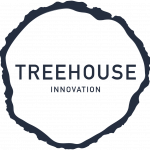Future Proof Me This…
Future-proofing: Building strategies designed to withstand uncertainty
Concepts like “future-proofing” strategy, that imply the ability to somehow foresee and guard against unknown future events, can sometimes carry mysterious and almost mystical connotations — especially when viewed alongside more prosaic methodologies in the modern leader’s toolkit such as LEAN or TQM.
The allure of such an approach is undeniable. After all, could there be a greater source of competitive advantage than that of being able to foresee changes in the market? Or in the world at large? Doubtful.
The sad truth remains, however, that we are but mere mortals, constrained by our temporal limitations. We cannot see the future; there are no crystal balls.
However, this does not mean that business leaders are doomed to wander blindly into an uncertain future. In fact, they have several powerful resources at their disposal: their knowledge, their experience, and most importantly, their imagination. All of us employ these resources every day to some extent. Sometimes very intentionally as we apply lessons learned from past successes or failures directly to current challenges— and other times more passively as we follow instinctual ‘gut feelings’ about a certain set of circumstances.
So how can these resources be applied in a way that yields more resilient, ‘future-proofed’ strategies?
From our experience, there are two key elements that can help.
First is the adoption of a more structured approach to the way we think about the future. It is not enough for leaders to ponder the intricate uncertainties that surround strategic decisions in search of divine inspiration. It may work for a select few, but the rest of us require a bit more guidance.
There are countless tools available to help — from simple 30-minute exercises to comprehensive, research-based scenario planning projects. Regardless of the depth of inquiry, the objective remains fundamentally the same: to maximize the ability of current knowledge, experience and imagination to remove uncertainty about the future.
Correctly understood, then, ‘future-proofing’ is more about getting a more complete understanding of what we already know and can reasonably imagine than it is about fortune telling.
The future proofing tools that Treehouse Innovation utilizes enable the systematic collection and organization of information, both analytical and intuitive, to create as complete a picture as possible of a given strategic challenge. Beyond this, many approaches employ lateral and creative thinking techniques that challenge hidden assumptions and reveal formerly “unknown unknows”.
The second, and equally crucial element, is people. Applying future-proofing techniques in the boardroom can have a significant impact on the robustness of the resulting strategies. Involving more people from within the organization in the process only increases it — often exponentially.
By actively engaging the broader organization in thinking about the future, leaders can effectively create a larger, more powerful ‘antenna’ for detecting and interpreting the emerging waves of weak signals that might impact their future strategy. Within this broader forum, ideas collide and evolve, diverse experiences suggest new possibilities, and unique perspectives can reveal otherwise obscured corners from which the next ‘black swan’ events might appear.
While future-proofing techniques cannot enable us to see the future, they can help us think about it from a more informed position. From this starting point, leaders can at least begin to narrow the field of likely futures within which a strategy needs to thrive, and plan accordingly. More ambitiously, when applied at an organizational level, these techniques can be used to dramatically increase responsiveness to emerging trends, resulting in what competitors might even mistake for prescience.

